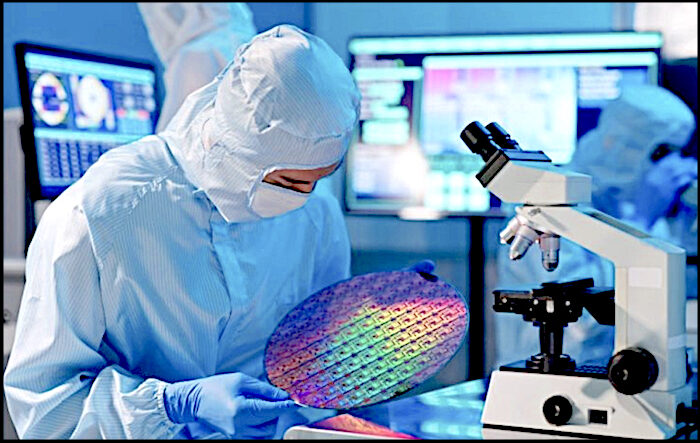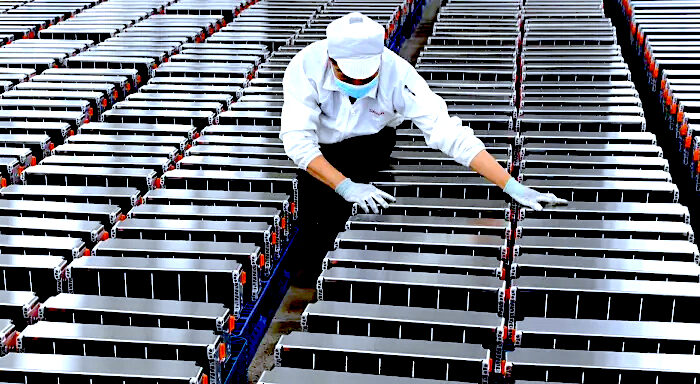China is now leading the world in 37 out of 44 key technologies, including hypersonic missiles, artificial intelligence, drones and electric batteries, according to a recent Australian research report.
China ranks first globally in defense- and space-related technologies in terms of high-impact research, the Australian Strategic Policy Institute (ASPI) said in the report.
ASPI is a defense and strategic policy think tank based in Canberra founded by the Australian government and funded by overseas governments as well as defense and technology companies.
China also excels in areas including nanoscale materials and manufacturing, coatings, 5G and 6G technologies, hydrogen and ammonia power, super-capacitors, electric batteries, synthetic biology and photonics sensors, the ASPI report said. It may pose technology monopoly risks to other countries within these areas.
ASPI said its findings should be a wake-up call for democratic nations, which it said should pursue a strategic critical technology step-up.
"Governments around the world should work both collaboratively and individually to catch up to China. They must pay greater attention to the world's center of technological innovation and strategic competition: the Indo-Pacific.The United States, the world's biggest economy, is leading in seven out of the 44 technologies covered by the ASPI.
"While China is in front, it's important for democracies to take stock of the power of their potential aggregate lead and the collective strengths of regions and groupings. The European Union, the Quad and AUKUS should deepen their collaboration and jointly boost their research and development (R&D) investments."
The US maintains a leading edge in the design and development of advanced semiconductor devices, advanced integrated circuit design and fabrication, and in research fields related to high-performance computing. It's also in the lead in the crucial areas of quantum computing, vaccines and medical countermeasures.
The US maintains an advantage in its research in small satellites and space launch systems but it will not be able to achieve a technology monopoly in the areas, the report predicts.
At the same time, China's leading status in the areas of advanced aircraft engines, drones, and collaborative robots may pose a medium technology monopoly risk to the world, it said.
As China claims seven of the world's top 10 research institutions for advanced aircraft engines - a key capacity in the strategically crucial hypersonic missile race - it has a sufficient critical mass of domestic expertise to train the next generation of top scientists, according to the ASPI report.
Within this field, China is publishing more than four times as much high-impact research as the US. News reports claimed the US intelligence community was surprised when China tested a nuclear-capable hypersonic missile that circled the globe in low-orbit space in August 2021.
The ASPI report said China is attracting 21.6% of its high-impact authors from democratic countries, including the US (9.8%), the United Kingdom (7.8%), Canada (3.9%), the EU (2%) and Japan (2%). It said these talents include Chinese nationals who studied and worked abroad as well as foreigners moving to China to work at research institutions or companies.
The report also highlights China's strong advantage in the AI, drone and electric battery sectors.
ASPI researchers wrote:
"Research innovations and scientific breakthroughs will continue to translate into increasingly sophisticated AI-enhanced equipment in the hands of military commanders around the world."One country
The report stated:
"As the perceived capability gap narrows in the years and decades to come, China's cost calculations for taking Taiwan by force will be lower, and the risk of major-power conflict could rise."In recent years, the US has tried to thwart China's rising advantage in AI, drones and electric batteries with a carrot-and-stick approach, including through the imposition of sanctions on various Chinese companies. Last May, the Biden administration said it would begin a $3.1 billion plan to boost domestic battery manufacturing.
China's Contemporary Amperex Technology Co (CATL), the world's largest e-vehicle battery maker, last month agreed to join hands with Ford Motor Co to produce lithium-iron-phosphate batteries in Michigan. CATL had a global market share of 37% last year, followed by South Korea's LG Energy Solution with 13.6%, according to SNE Research.
Shenzhen-based DJI Technology, which dominates more than 70% of the world's drone market, was sanctioned by the US Commerce Department and Treasury Department in 2020 and 2021, respectively.
Last October, media reports said Washington asked Taiwan's TSMC not to produce high-end chips for Birentech Technology, a Shanghai-based fabless chip maker.
Two months before that, Birentech launched a general-purpose graphics processing unit (GPU) called BR100. The company said this flagship 7 nanometer chip, which contains 77 billion transistors within its die, would offer faster performance than US company Nvidia's A100 GPUs in AI processing.
In September, the US government told Nvidia to stop exporting its A100 and H100 chips to China and Russia. The US also restricted sales of AMD's MI250 Accelerator AI chip to China.
At the same time, the US announced a ban on shipping to China electronic design automation (EDA) software used in making the most cutting-edge 3nm semiconductors. Chinese chip designing firms are reportedly focusing on 5nm and 7nm chips.
Chen Wei, president and chief software architect at TensorChip, says BR100 is no doubt the fastest GPU chip in China but it may not be popular in the future as it uses the less common BF16 format, instead of the popular one known as FP16.
In computing, FP16, or half-precision, is a binary floating-point computer number format that occupies 16 bits. It is said to be faster than FP32, or single precision, which has 32 bits. The BF16 format is a mix of FP16 and FP32.







Comment: Think what it could be if all countries were to enhance cooperation and complement each other's efforts in service to and benefit for all mankind. The BRI may come close.